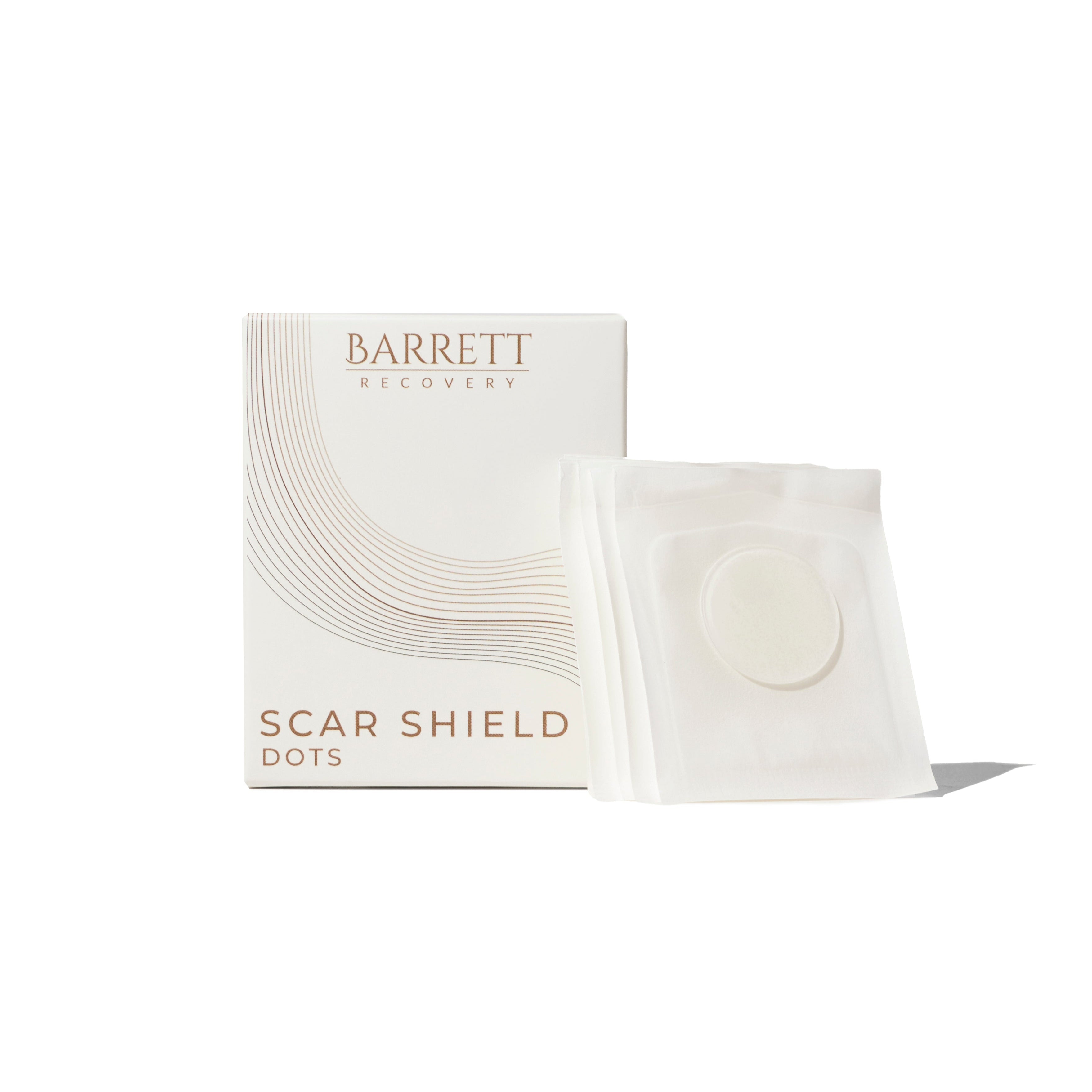
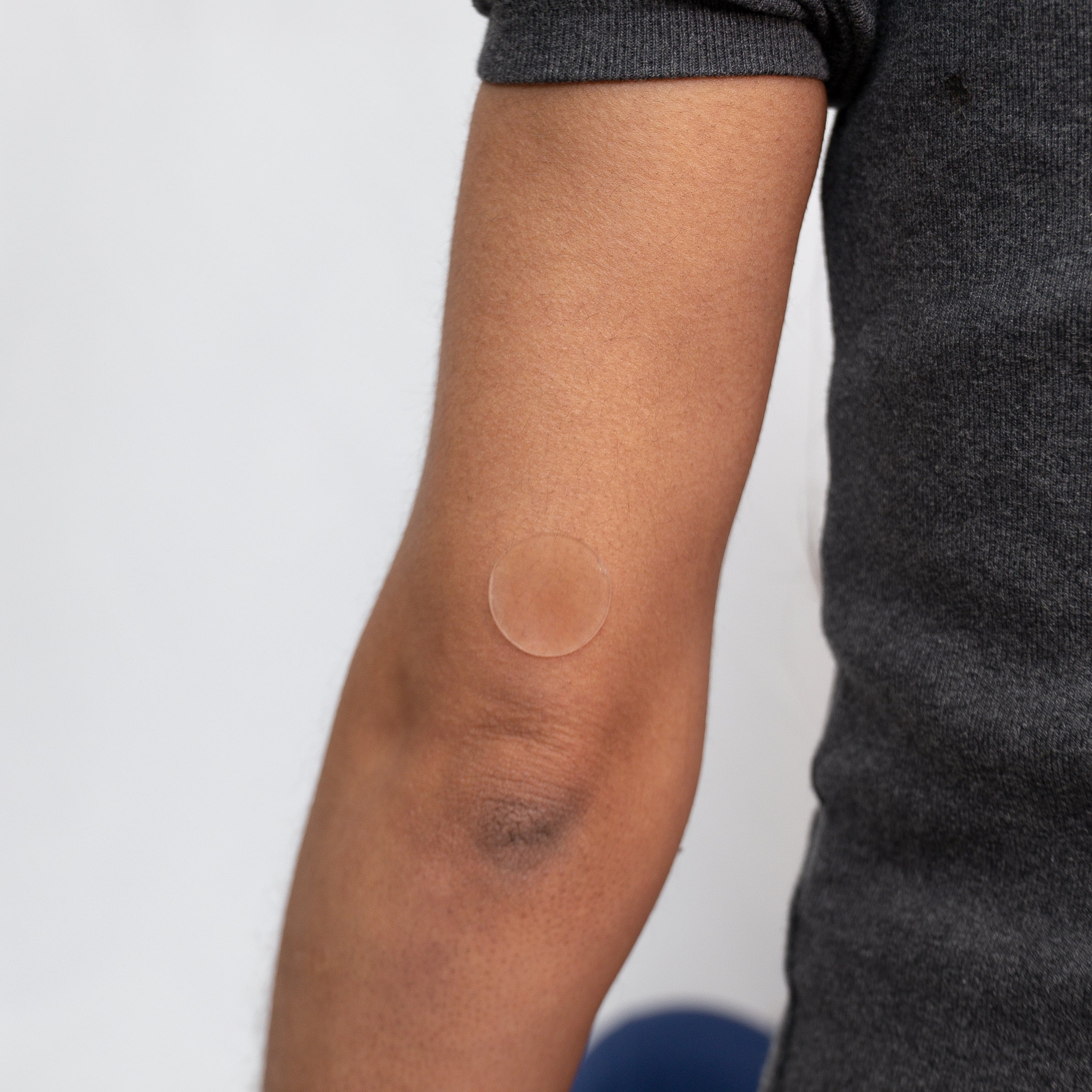
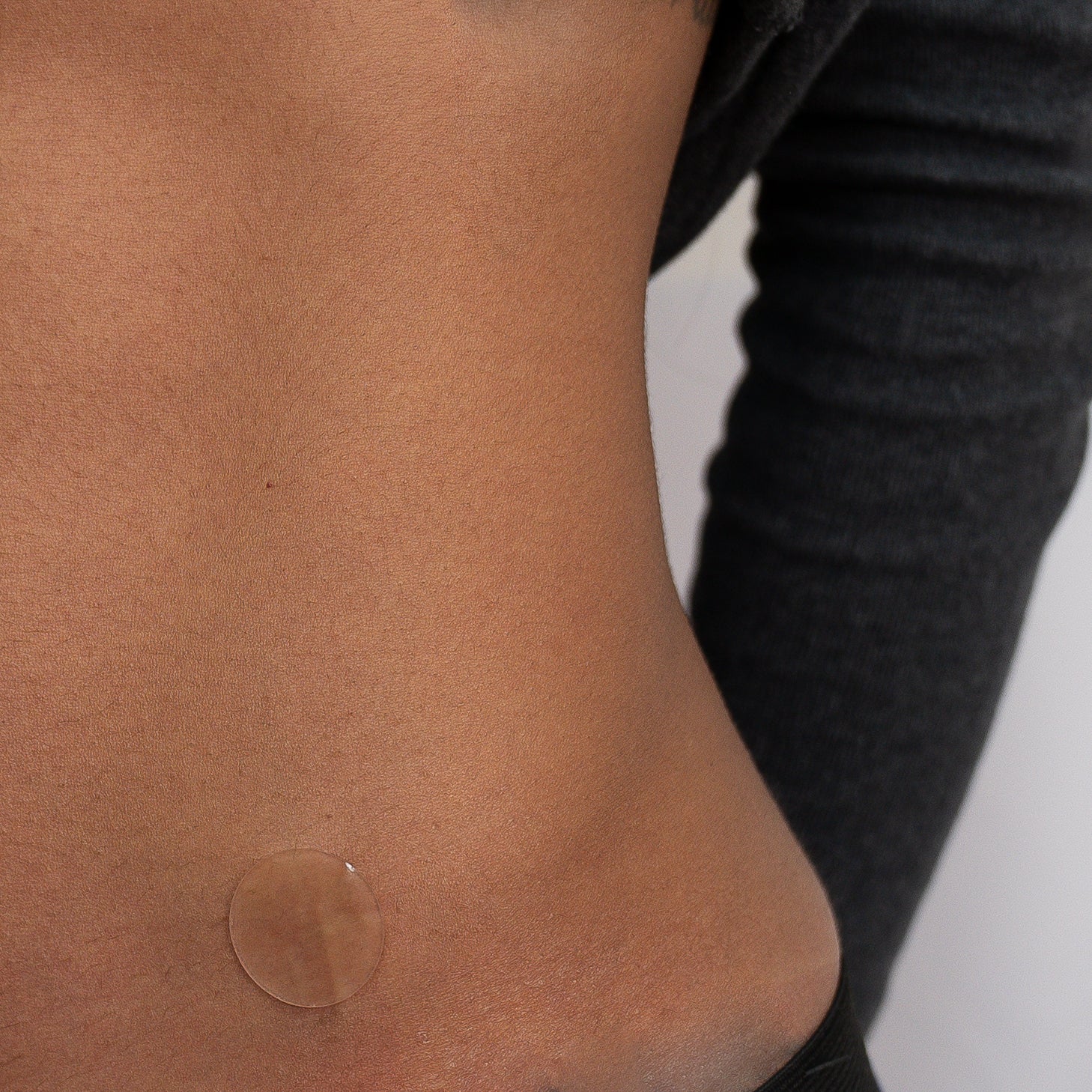
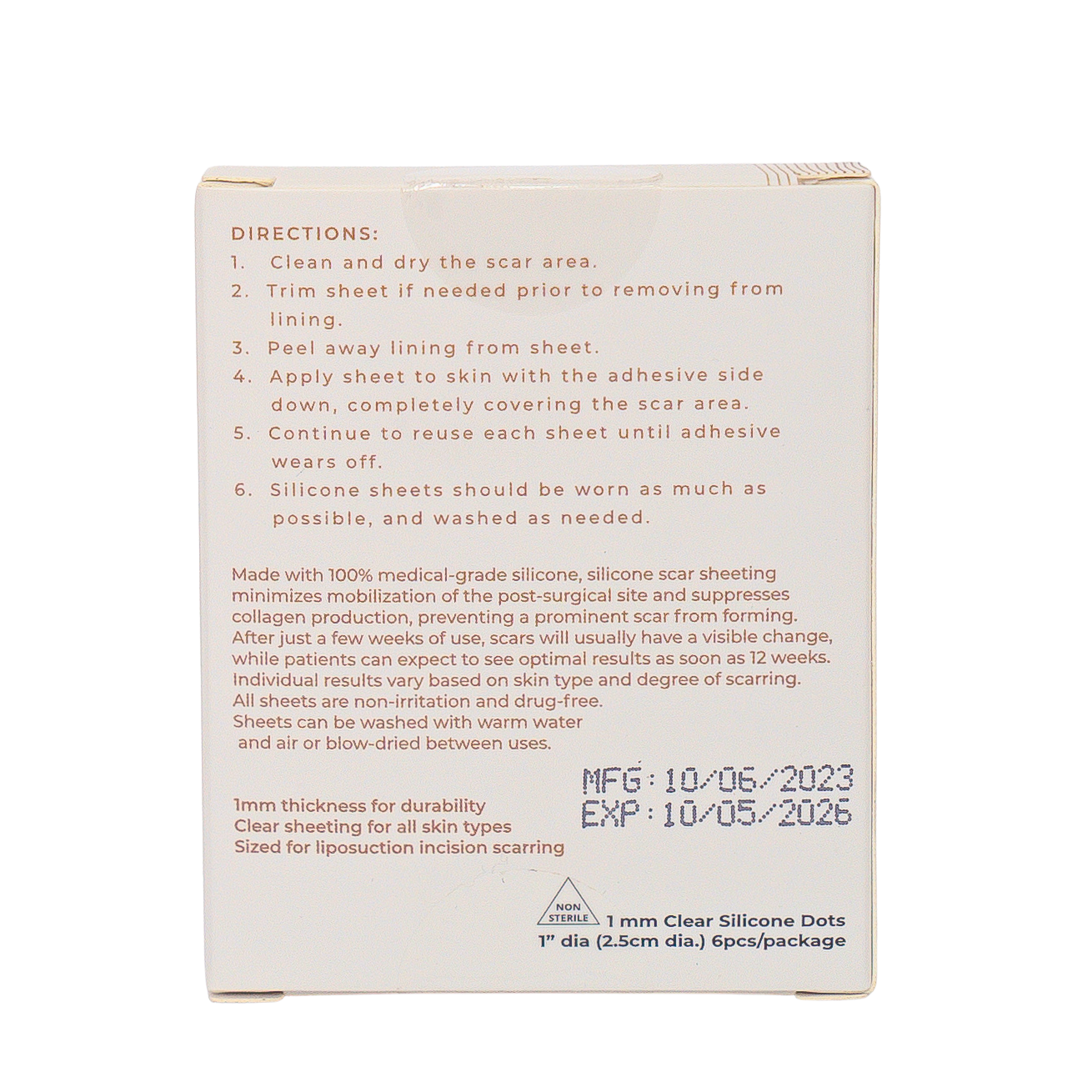




























































Common Curiosities
Silicone scar sheets work by creating a protective barrier over the scar that helps hydrate the skin, regulate collagen production, and reduce excessive scar tissue formation. This barrier mimics the skin’s natural moisture balance, which softens, flattens, and fades scars over time. They are widely recommended by dermatologists and plastic surgeons for both old and new scars.
Scar Shield Dots are water-resistant but not fully waterproof. They should be removed before bathing, swimming, or showering to maintain optimal stickiness and performance.
For best adhesion and results, apply Scar Shield Dots to clean, dry skin without any creams, oils, or serums underneath. You can resume your skincare routine once the dot is removed.
Absolutely. Scar Shield Dots are not only great for surgical scars, but they’re also formulated to improve the appearance of acne scars and post-inflammatory hyperpigmentation. With consistent use, they help smooth textured areas and reduce discoloration for clearer-looking skin.
Yes, Scar Shield Dots are made with hypoallergenic, medical-grade silicone that’s safe for sensitive skin. They’re latex-free and free from irritating adhesives, making them suitable for delicate post-surgical skin or acne-prone areas.
Yes. While newer scars may respond more quickly, Scar Shield Dots can still help improve the texture and color of older scars over time. For older marks, consistent daily use for 8 to 12 weeks or more is recommended.
Most people begin to see visible improvement in their scar’s texture, color, and size within 4 to 8 weeks of consistent use. For older or more stubborn scars, noticeable results may take up to 3 to 6 months. For best results, consistent daily use is key.
Unlike scar gels or creams, Scar Shield Dots provide 24/7 targeted coverage with consistent moisture and pressure, which are clinically proven to enhance scar healing. Their occlusive seal helps protect scars from bacteria and environmental stress, giving them a significant edge over topical treatments alone.
